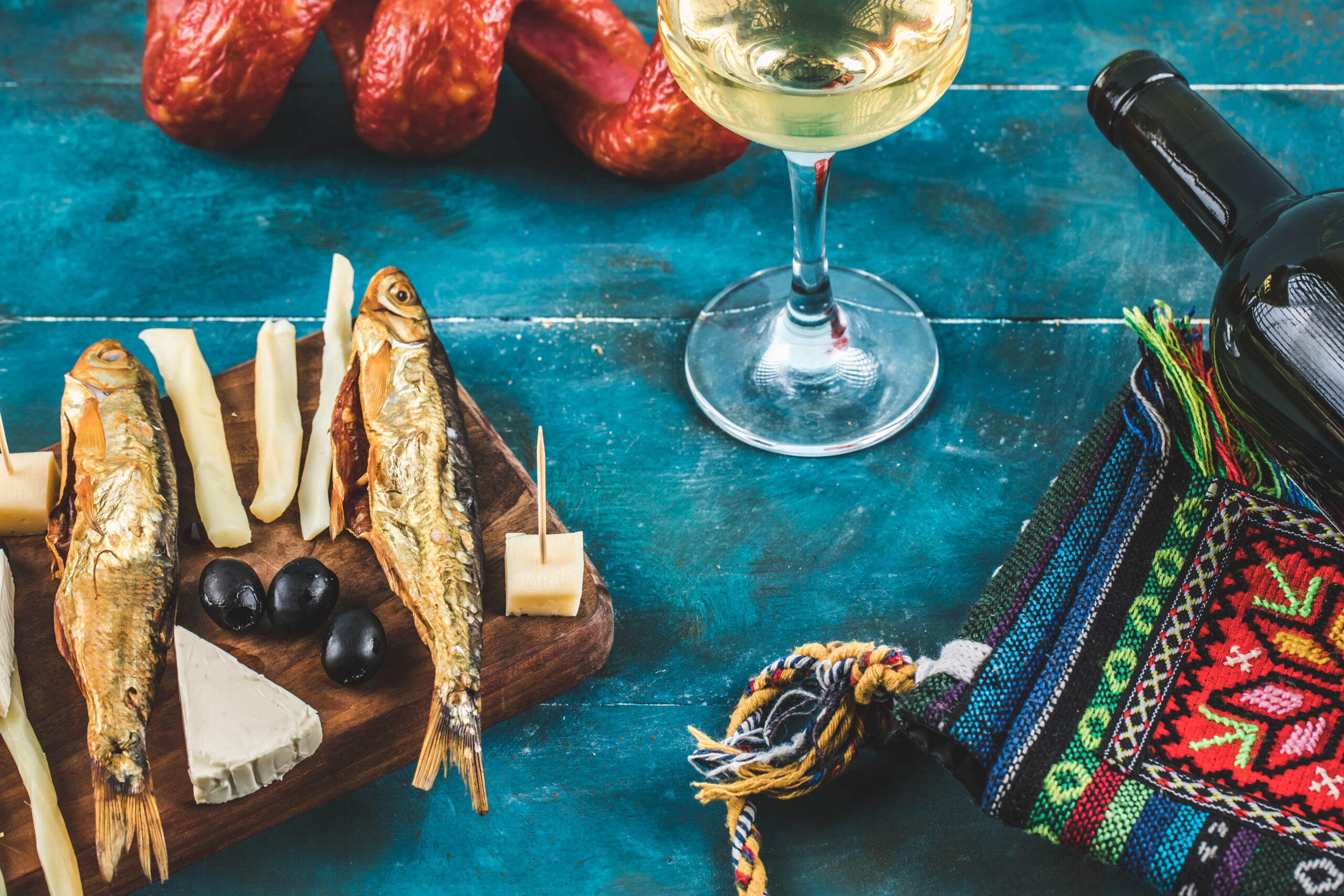Mastering the skill of pairing wine and food can turn a good meal into a memorable feast! In this article, we will dive deep into wine and food pairings. From basic principles to subtle tricks, you will learn to mix and match like a pro by the end of this read.
How can you understand flavours and textures?
Knowing the food and wine’s primary flavours and textures is critical to pairing. You can find a range of tastes like sweet, sour, salty, and bitter in both elements and varying textures — whether crunchy, smooth, or juicy. The goal is to find similar characteristics in your food and wine or blend opposites to create a satisfying balance.
For example, an acidic wine like Sauvignon Blanc can perfectly balance out a dish rich in creamy textures, such as Alfredo pasta. On the other hand, a robust red wine like Cabernet Sauvignon could beautifully complement a heavy, meaty dish like a well-marbled steak.
As you may have noticed, the ultimate goal is to match the strength or subtlety of your wine with your food. It ensures that neither overshadows the other, which is vital for a balanced and enjoyable meal.
For instance, a light salad with vinaigrette would not fare well with a bold, full-bodied red wine like a Zinfandel. The reason is that the wine would drown out the delicate flavours of the salad. Similarly, a light Pinot Grigio would be lost next to a hearty beef stew. The weight and texture of the food should be on par with those of the wine.
Classic pairings: time-tested combinations
Classical pairings have been honed and perfected over generations. Take, for example, the renowned pairing of oysters and Chablis. Chablis is a French Chardonnay known for its mineral and acidic profile. It cleanses the palate of the brininess and saltiness of the oyster, enhancing both elements in the process.
Another tried-and-true combination is a rich Bordeaux wine with a succulent lamb roast. The strong tannins in Bordeaux wines cut through the lamb’s fat. It helps balance its richness and makes each bite as exciting as the first.
Here are other classic pairings that are worth your attention:
- Chardonnay and roast chicken. The buttery notes in a Chardonnay blend beautifully with roast chicken’s juicy, slightly fatty qualities.
- Cabernet Sauvignon and steak. The tannins in a Cabernet cut and the fattiness of a good steak make this match taste like heaven.
- Pinot Noir and salmon. Pinot Noir has enough acidity to cut through the oily fish but is light enough not to overpower it.
- Sauvignon Blanc and goat cheese. Sauvignon Blanc’s acidity and green notes are the perfect counterpoint to creamy, tangy goat cheese.
- Shiraz and barbecued lamb. The smoky, spicy notes in a Shiraz work wonders with the intense barbecued or grilled lamb flavours.
- Zinfandel and BBQ ribs. Zinfandel’s bold, fruity notes can stand up to barbecued ribs’ strong and smoky flavours.
- Moscato and fruit desserts. The light sweetness and effervescence of a Moscato pair well with fruit-based desserts like tarts or sorbets.
- Port and blue cheese. The sweetness of Port wine balances the saltiness of blue cheese.
- Merlot and roast pork. Merlot’s smooth tannins and cherry-like flavours pair wonderfully with roast pork’s rich, fatty texture.
Such classic pairings benchmark the potential when you find just the right wine to go with a particular dish.
Exploring new combinations
Wine and food pairing is a vast landscape ripe for exploration. While it is valuable to understand and appreciate classic pairings, a world of exciting, unconventional matches is waiting to be discovered.
For example, spicy Shiraz wines can play an interesting role when combined with the intense flavours of Mexican cuisine, like chipotle-spiced dishes. The wine’s inherent spiciness can resonate with the dish’s spices, elevating the overall taste experience.
Similarly, consider pairing an aromatic and slightly sweet white wine like Gewürztraminer with Thai or Indian dishes. The wine’s mild sweetness can counterbalance the spiciness of the food, bringing a harmonious contrast to your palate.
What about vegetarian and vegan pairings?
Gone are the days when wine pairings focused solely on meat-centric dishes. Today, many wines complement vegetarian and even vegan meals beautifully.
For instance, consider the earthy quality of a good Pinot Noir when enjoying a hearty mushroom risotto. The earthiness of the wine and the mushrooms can result in a pairing greater than the sum of its parts. Likewise, a light and zesty Albariño could be the perfect companion to a vegetable stir-fry, highlighting its flavours without overpowering them.
When combining wines with plant-based dishes, consider the leading flavours and textures in the food. Doing so will help you craft a well-rounded and fulfilling dining experience that neither the wine nor the food will dominate!
Conclusion
The art of wine and food pairing is a journey of discovery. While there are general guidelines and classic combinations to lean on, the most exciting pairings often come from your experiments. Whether dining out or cooking at home, take risks and try new combinations. You might stumble upon your new favourite pairing. Cheers to exploring this delectable art form!
Remember to share your discoveries with us! We are always happy to hear from our readers.

